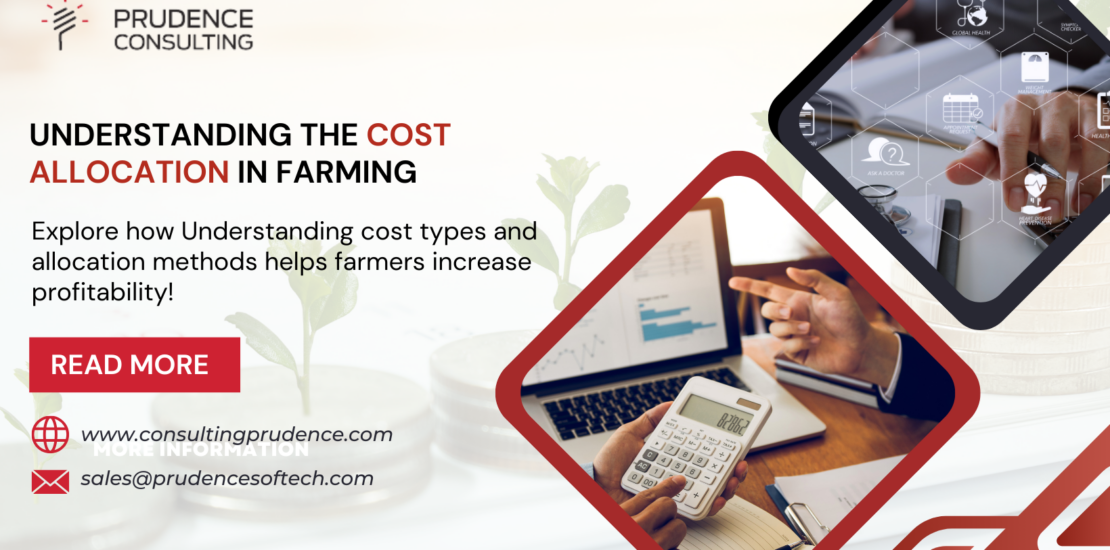Understanding the cost allocation in farming
-
March 26, 2024
- Posted by: piyush.gupta@prudencesoftech.in
- Category: Livestock & Agriculture
No Comments

- March 26, 2024
- Posted by: piyush.gupta@prudencesoftech.in
- Category: Livestock & Agriculture


Farming is not just about planting seeds and waiting for them to grow. It’s a complex economic activity that involves various costs at every stage of production. Understanding how these costs are allocated is crucial for farmers to make informed decisions and ensure profitability. In this blog, we’ll delve into the intricacies of cost allocation in farming and explore its significance in agricultural economics.
The Basics of Cost Allocation: Cost allocation refers to the process of assigning expenses to specific activities, products, or services. In farming, this involves identifying all the costs associated with producing crops or raising livestock and distributing them appropriately to determine the true cost of production.
Also Read : ERP for dairy farm product manufacturing
Types of Costs in Farming:
- Variable Costs: These are expenses that vary with the level of production, such as seeds, fertilizers, pesticides, fuel, and labor. Variable costs are directly related to the quantity of output and fluctuate based on factors like crop choice and input prices.
- Fixed Costs: Fixed costs remain constant regardless of the level of production. They include expenses like land rent or mortgage payments, machinery depreciation, insurance, and property taxes. Fixed costs are incurred regardless of whether the land is cultivated or not.
- Overhead Costs: Overhead costs are indirect expenses that cannot be directly attributed to a specific production activity but are essential for farm operations. Examples include administrative salaries, utilities, repairs and maintenance, and marketing expenses.
- Opportunity Costs: These represent the value of resources that could have been used in alternative ways if not allocated to farming. For instance, the opportunity cost of using land for agriculture may be the potential income from leasing it for other purposes such as real estate development.
Methods of Cost Allocation:
- Direct Cost Allocation: This method involves assigning specific expenses directly to the production activities they support. For example, the cost of seeds and fertilizers can be allocated directly to the crops they are used for.
- Indirect Cost Allocation: Indirect costs are those that benefit multiple production activities and cannot be easily traced to a single product. These costs are allocated using allocation bases such as acreage, labor hours, or machine hours. For instance, the cost of farm machinery maintenance can be allocated based on the hours each machine is used for different crops.
- Full Cost Allocation: Full cost allocation aims to assign all costs, both direct and indirect, to the products or activities they support. This method provides a comprehensive view of the total cost of production but may require more complex accounting systems.
Also Read : ERP for dairy milk product manufacturing
Conclusion:
Cost allocation is a fundamental aspect of agricultural economics that enables farmers to assess the true cost of production, make informed decisions, and optimize resource utilization. By understanding the different types of costs and methods of allocation, farmers can enhance their profitability, sustainability, and competitiveness in the dynamic agricultural industry.


